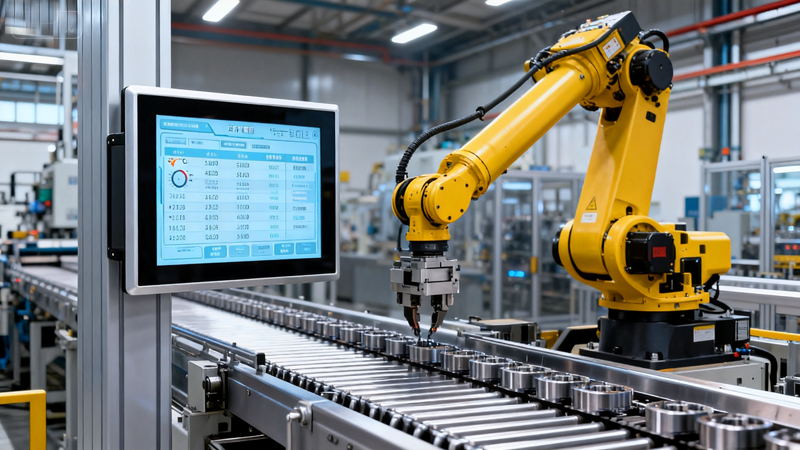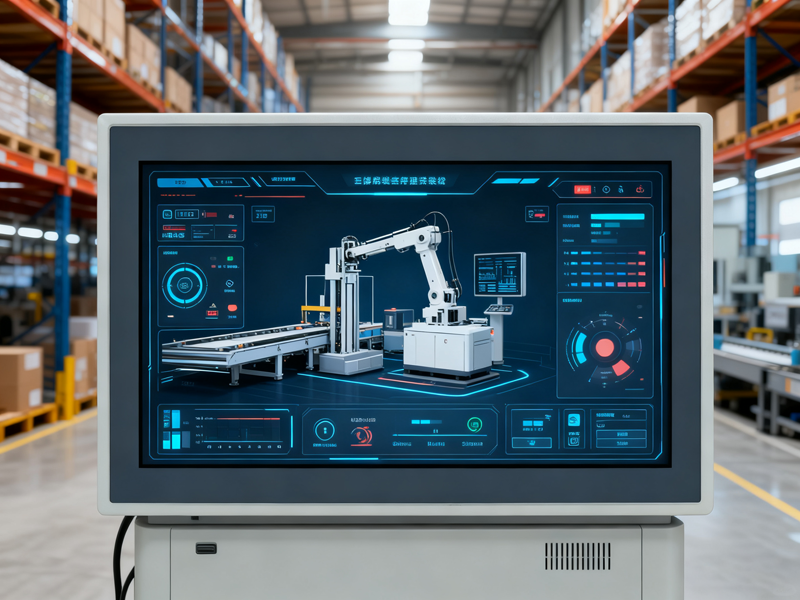Dans le domaine de la santé, Un suivi rapide et précis des signes vitaux est essentiel pour les soins aux patients : détecter une chute soudaine de la tension artérielle ou une augmentation de la fréquence cardiaque peut sauver des vies.. L'écran tactile du moniteur patient constitue l'interface de première ligne à laquelle les cliniciens peuvent accéder, interpréter, et agir sur ces données. Contrairement aux moniteurs encombrants à boutons du passé, les écrans tactiles simplifient l'interaction: les cliniciens peuvent faire glisser leur doigt pour afficher les tendances, appuyez pour régler les alarmes, et zoomez facilement sur les lectures. Ce guide explore comment ces écrans tactiles améliorent le suivi des signes vitaux, caractéristiques clés à rechercher, et les meilleures pratiques d'intégration - aidant les établissements de santé à fournir des services efficaces, suivi précis des patients.

Comment les écrans tactiles des moniteurs patients améliorent le suivi des signes vitaux
1. Visualisation intuitive des données
Tableaux de bord en temps réel: Les écrans tactiles affichent les signes vitaux (rythme cardiaque, SpO₂, pression artérielle, température) en clair, tableaux de bord à code couleur. Par exemple, un patient ayant des signes vitaux normaux peut avoir un badge vert « statut », alors qu'un patient souffrant de tachycardie (fréquence cardiaque élevée) déclenche une alerte jaune ou rouge, permettant une évaluation en un coup d'œil.
Analyse des tendances: Les cliniciens peuvent utiliser des gestes tactiles (glisser vers la gauche/droite) pour afficher les tendances des signes vitaux au fil des minutes, heures, ou jours. Cela aide à identifier les modèles (par exemple., "Est-ce que la tension artérielle baisse chaque après-midi?») qui éclairent les plans de soins.
Mises en page personnalisables: Le personnel peut réorganiser les éléments de l'écran (par exemple., augmenter la valeur de SpO₂ pour les patients souffrant de problèmes respiratoires) prioriser les données les plus critiques pour chaque patient.
2. Interaction rationalisée avec les alertes
Acquittement rapide des alarmes: Lorsqu'un signe vital dépasse un seuil (par exemple., blood pressure >180/120), l'écran tactile fait clignoter une alarme. Les cliniciens peuvent appuyer sur « Acquitter » ou « Silence » directement sur l'écran, plus rapidement qu'en parcourant les menus des boutons.
Personnalisation de l'alarme: En quelques clics, le personnel peut ajuster les limites d’alarme (par exemple., diminuer l'alarme de fréquence cardiaque pour un patient bradycardique) ou configurer des groupes d'alarmes multi-patients (utile dans les unités de soins intensifs avec plusieurs moniteurs).
3. Intégration transparente avec les DSE
Enregistrement de données à une touche: Les écrans tactiles permettent aux cliniciens d'enregistrer les signes vitaux directement dans le dossier de santé électronique. (DSE). Cela élimine les erreurs de cartographie manuelles et permet de gagner du temps par rapport à la transcription des données à partir d'un moniteur non tactile..
Extraction de données DSE: L'écran peut extraire l'historique du patient (par exemple., "Antécédents de tension artérielle") du DSE, donner aux cliniciens le contexte lors de l'évaluation des signes vitaux actuels.
Principales caractéristiques des écrans tactiles efficaces des moniteurs patients
1. Durabilité pour les environnements de soins de santé
Revêtements antimicrobiens: Les écrans dotés de revêtements à base d'ions d'argent ou de cuivre résistent à la croissance des bactéries (par exemple., SARM, C. différence) qui prospèrent sur des surfaces partagées – essentielles au contrôle des infections.
Résistance chimique: Peut résister à des nettoyages fréquents avec des désinfectants de qualité hospitalière (par exemple., solutions d'ammonium quaternaire) sans rayer ni perdre la sensibilité tactile.
Résistance aux chocs: Les surfaces en verre trempé ou en polymère robuste survivent aux chocs accidentels (par exemple., à partir d'une perche à perfusion roulante) fréquent dans les chambres d'hôpital très fréquentées.
2. Performances tactiles et précision
Compatibilité mains gantées: Les cliniciens portent souvent des gants : les écrans tactiles haut de gamme détectent les contacts à travers le latex, nitrile, ou même des gants doubles.
Prise en charge multi-touch: Permet de pincer pour zoomer sur les graphiques de tendance ou de tapoter simultanément (par exemple., régler deux paramètres d'alarme à la fois) pour un flux de travail plus rapide.
Faible latence: Les touches s'enregistrent instantanément (Temps de réponse ≤50 ms) afin que les cliniciens ne subissent aucun retard lors de l'accès aux données critiques.
3. Connectivité et évolutivité
Capacités sans fil: Certains écrans tactiles prennent en charge le Wi-Fi ou le Bluetooth, permettre le transfert de données vers des appareils mobiles (par exemple., une tablette d'infirmière) pour la surveillance au chevet sans être attaché au moniteur.
Extension modulaire: Les écrans peuvent s'intégrer à des modules complémentaires (par exemple., un moniteur de CO₂ pour les patients ventilés) via USB ou Ethernet, afin que les installations puissent être mises à niveau sans remplacer tout le système.
Choisir le bon écran tactile pour moniteur patient
1. Alignez-vous sur les flux de travail cliniques
Besoins spécifiques au département: Une USI a besoin d'écrans tactiles avec une gestion avancée des alarmes et des vues multi-patients, tandis qu'une division commune pourrait privilégier la simplicité et la facilité d'utilisation pour le personnel en rotation.
Exigences de formation: Si votre équipe comprend de nouveaux diplômés ou des voyageurs, optez pour des écrans intuitifs, interfaces basées sur des icônes (contre. menus complexes) pour réduire le temps de formation.
2. Évaluer les spécifications techniques
Taille et résolution de l'écran: Écrans plus grands (12–15 pouces) avec une résolution 1080p+ améliore la lisibilité, surtout dans les pièces peu éclairées.
Luminosité et visibilité: 400+ La luminosité des lentes assure la visibilité sous les lumières vives de l'hôpital ou à travers l'éblouissement des fenêtres.
Alimentation de secours: Les batteries intégrées maintiennent l'écran en marche pendant les pannes de courant, pour que les signes vitaux restent visibles.
3. Tenez compte du coût total de possession (Coût total de possession)
Garantie et assistance: Recherchez des garanties de 3 à 5 ans qui couvrent les dommages accidentels (courant dans les soins de santé). Priorisez les fournisseurs avec 24/7 support technique pour une résolution rapide des problèmes.
Pérennité: Choisissez des écrans dotés de capacités de mise à jour logicielle pour ajouter de nouvelles fonctionnalités (par exemple., Prédiction des tendances basée sur l'IA) à mesure que la technologie évolue.
FAQ sur les écrans tactiles des moniteurs patients
T1: Les écrans tactiles des moniteurs patients peuvent-ils être utilisés dans les suites IRM?
A1: Oui, mais choisissez des modèles « IRM-safe » (matériaux non magnétiques, pas de composants métalliques) pour éviter les interférences avec l'équipement d'imagerie.
T2: À quelle fréquence ces écrans tactiles doivent-ils être nettoyés?
A2: Après chaque utilisation par un patient (selon les protocoles de contrôle des infections de l'hôpital). Leurs revêtements durables résistent à des nettoyages fréquents sans dommage.
T3: Fonctionnent-ils avec tous les systèmes DSE?
A3: La plupart s'intègrent aux principaux DSE (Épique, Cerner, Méditech) via HL7 ou API. Confirmez la compatibilité avec votre fournisseur avant d'acheter.
T4: Quelle est la durée de vie typique d’un écran tactile de moniteur patient?
A4: 7–10 ans avec des soins appropriés – plus longtemps que les moniteurs à boutons traditionnels (qui dure 3 à 5 ans).
Conclusion
Les écrans tactiles des moniteurs patients révolutionnent le suivi des signes vitaux en rendant l'accès aux données intuitif, rapide, et sans erreur – essentiel pour fournir des soins aux patients en temps opportun. En sélectionnant un écran durable, des fonctionnalités conviviales et en les alignant sur vos flux de travail cliniques, vous pouvez améliorer à la fois la sécurité des patients et l’efficacité du personnel.
Si vous ne savez pas quel écran tactile pour moniteur patient convient le mieux à votre établissement (par exemple., compatibilité DSE correspondante, évaluer les besoins du département, ou comprendre le TCO), Remplissez le formulaire sur notre site Web. Nos experts en technologies de la santé analyseront vos besoins et recommanderont la solution idéale pour un, surveillance transparente des signes vitaux.



